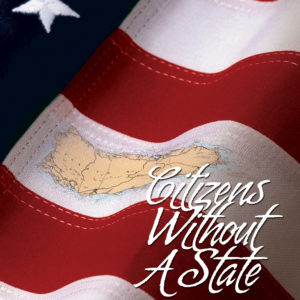As we think about the process of becoming a state for Puerto Rico, we like to look back and see how the current 50 states gained statehood. The process wasn’t the same for all 50, and it wasn’t always simple.
Under British colonial rule the lands that became Kentucky were beyond the known frontier of Virginia, separated by the rugged Appalachian mountains. A single pass in the Cumberland Ridge allowed frontiersmen to venture into the wilderness of the western regions. Those who survived hostile tribes and made a way of life in Kentucky included pioneer legend Daniel Boone, and a population of settlers that grew steadily beginning in 1769.
Most settlers in Kentucky came from Virginia, and as settlements grew demands on the government grew as well. The settlers in Kentucky wanted the protection and services the government of Virginia provided in the rest of the colony. The British claimed the power to rule the western lands but largely neglected the settlers, so Kentucky joined the rest of the Virginia colony in the rebellion of 1776.
After the Declaration of Independence and the transition of Virginia from a colony to the largest state in the loose union formed under the Articles of Confederation, Kentucky’s rapidly growing population had a chance for political empowerment when it was made a county of Virginia. Not satisfied, beginning in 1784 the people of Kentucky began seeking separation from Virginia and admission as a State under the Articles of Confederation.
Seeking to exploit Kentucky’s separatist movement, during the Revolutionary War both Britain and Spain offered to recognize Kentucky’s independence. Britain wanted an ally in its war to end the rebellion, and Spain wanted Kentucky to recognize its claims to the Mississippi River region. The people of Kentucky used those flirtations with foreign powers to give Congress and Virginia new incentive to admit Kentucky as a State.
Kentucky would have to wait for the War for Independence to end, and then for the Articles of Confederation to be replaced by the U.S. Constitution, before its statehood petition would be honored. From 1785 to 1792 no less than 10 conventions seeking statehood were conducted. Each time, the Commonwealth of Virginia set conditions on separation; at first, they even asked for money from Kentucky.
Eventually, the State of Virginia agreed that Kentucky could conduct a constitutional convention and to become its own State. This agreement is required by Article I, Section 10 of the Constitution. Kentucky was never a U.S. territory. It was one of four states, along with Vermont, Maine and West Virginia, carved from existing states after the first 13 had ratified the Constitution.
Kentucky adopted its statehood constitution on April 19, 1792, meeting the deadline established by Congress for admission before June 1, 1792. One year and 88 days after Vermont became the 14th State of the Union, the District of Kentucky became the 15th State.
Congress had approved a statehood admissions act on February 4, 1791, 29 days before Vermont was admitted to the Union on March 4, 1791. This was an early example of the custom of linking admission of each new state in the South to another in the North.
Like Puerto Rico, Kentucky is a commonwealth. That is to say, it has the word “Commonwealth” in its title and is known as the “Commonwealth of Kentucky.” There is no legal difference between Kentucky and any other state.
Other posts in this series:
This post was originally written in English and may be being auto-translated by Google.







3 Responses
[…] Kentucky […]
[…] Tennessee and the Tennessee Plan – Puerto Rico 51st on How Kentucky Became a State […]
[…] Rico is a territory of the United States. Just as the Commonwealth of Kentucky was a territory before it became a state, Puerto Rico is a […]